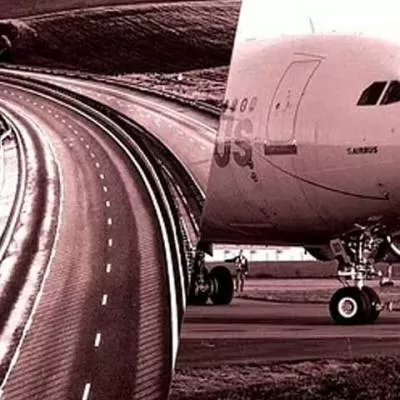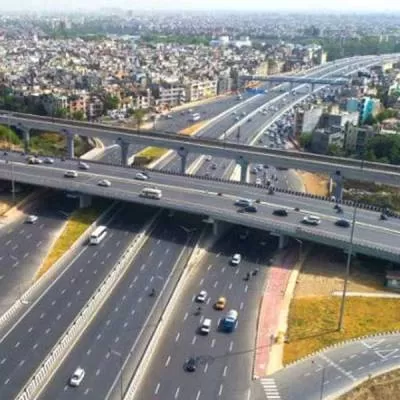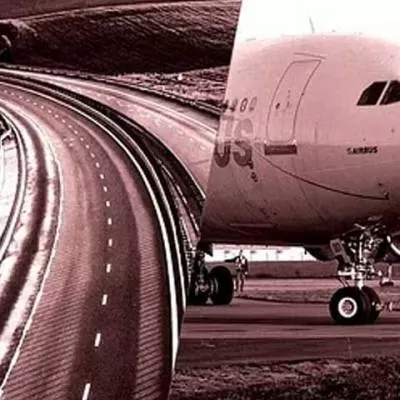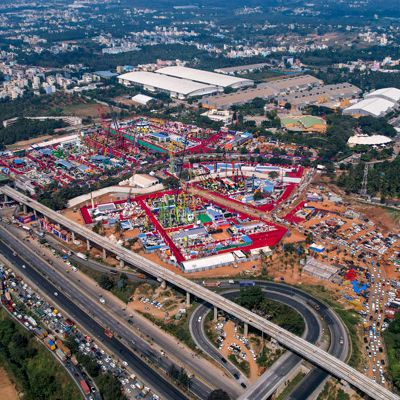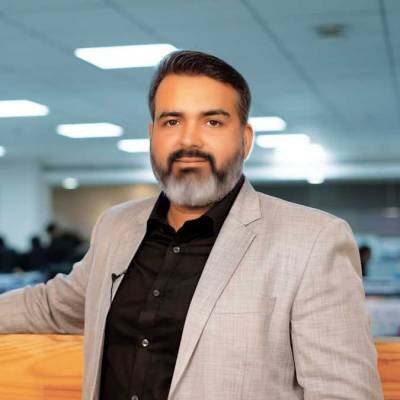- Home
- Real Estate
- Here are technologies to address the river pollution menace due to sewage dumping

Here are technologies to address the river pollution menace due to sewage dumping
"We hope to clean 70-80 per cent of the Ganga by March 2019," said <span style="font-weight: bold;">Nitin Gadkari, Union Minister for Water Resources, River Development and Ganga Rejuvenation,</span> during an conference in New Delhi, according to a PIB release. <br /> <br /> <span style="font-weight: bold;">That said, consider this:</span> A public interest litigation (PIL) was filed in Bombay High Court last year regarding the sewage being discharged through big sewage pipes along the coastline at Marine Drive directly into the Arabian Sea. Filed by an NGO, the PIL has reportedly sought directions to frame appropriate laws to stop the flow of sewage into the Mithi River, by laying a drainage system in the vicinity and upgrading sewage treatment plants (STPs).<br /> <br /> Here's another case relating to Gujarat High Court's notice to the Gujarat Government and Gujarat Pollution Control Board. As reported by the petitioner, Narmada River is being polluted with a high quantity of sewage (millions of litres per day) by various local authorities situated on the bank of the river in Madhya Pradesh. The excreta of 2.2 million people is reportedly released in the water of the Narmada, which is being used by millions of people in Gujarat and Rajasthan.<br /> <br /> <span style="font-weight: bold;">Status check<br /> So, what's making our rivers unclean?</span><br /> In the name of economic growth, most rivers and streams are turning into sewers, indicates a report by the Centre for Science and Environment. And, as more and more rivers are getting polluted, municipalities are finding it difficult to treat river water to safe levels and supply it to citizens.<br /> <br /> "Forty-two rivers in India are highly polluted with at least two neuro-toxic heavy metals," says <span style="font-weight: bold;">Suresh Kumar Rohilla, Programme Director-Water Management, Centre for Science and Environment. </span><br /> <br /> "The Ganga is polluted with five heavy metals. This is a major concern as a considerable number of people use water directly from rivers for domestic purposes." Further, latest studies reveal that at 67 locations, river water quality was beyond permissible limits; this is excluding the Ganga, one of the most polluted river basin systems. Another major issue is over-extraction of water with rivers almost dry at many places, says Rohilla. <br /> <br /> "About 30 per cent of the total sewage generated is treated," he adds. "And 40 per cent of total treatment capacities are in just two cities, Delhi and Mumbai."<br /> Against this backdrop, targets such as cleaning 70-80 per cent of the Ganga by March 2019 seem unrealistic as there is lack of convergence at the national, state and local programmes, avers Rohilla. "For example, the Swachh Bharat Mission, AMRUT and Namami Gange have no convergence at all. Toilets are being made in villages and towns with no plans or idea where the septic tanks will be emptied once they get filled. Septage and faecal sludge management is not even being talked about to date. About 180 mld of faecal sludge is dumped every day." <br /> <br /> <span style="font-weight: bold;">Solutions on offer</span><br /> While the current scenario seems daunting, efforts are underway. Several start-ups such as Detect Technologies and Help Us Green are using innovative ways to clean rivers. <br /> <br /> Students of Vivekananda Education Society's Institute of Technology in Mumbai have designed a robot named SEARCh that can clean the waste that gets accumulated on the surface of water bodies, including rivers. <br /> <br /> Kolkata-based Agastya Buoyant manufactures trash booms, an effective tool that restricts the flowing of floating solid waste in water. "These trash booms are customised according to the water quality and flow," explains <span style="font-weight: bold;">Prantik Sinha, Co-Founder and CTO, Agastya Buoyant.</span> "They are mainly positioned in points where massive collection of trashes happens; for example, in a nullah or a pumping station." The cost of the trash boom varies from Rs 5,000-8,000 per m; accessories such as anchors, buoys and tidal compensator, which is location-specific, cost extra.<br /> <br /> Agastya Buoyant's first flagship project was under the National Mission of Clean Ganga (NMCG). The firm is now working in Delhi and NCR to clean the Yamuna, and is working extensively with the Municipal Corporation of Greater Mumbai (MCGM) to control trash in sea beaches, pumping stations and various nullahs in the city. It has also provided booms for some lakes in Bengaluru and Kolkata.<br /> <br /> Ro-Boat is a hi-tech solution developed for completely autonomous river cleaning activities. "Ro-Boat is capable of autonomous operations, regardless of what time of the day it is, using GPS mission planning and navigation," shares <span style="font-weight: bold;">Aakash Kishore Sinha, CEO, Omnipresent Robot Technologies.</span> "With onboard HD cameras, sensors and computer, it is able to implement smart computer vision algorithms for detection of trash in the water body. After detection, it uses the advanced robotic arm mounted on the platform to pick up the trash and collect it on the bin. As soon as the bin capacity is exhausted, it rushes over to the riverbank where the waste can be retrieved by the collection agencies."<br /> <br /> Omnipresent Robot Technologies has assessed that it can clean up the stretch of the Yamuna adjoining Delhi with tentatively 50 Ro-Boat platforms and five drones in about four to five months. The firm is currently awaiting funding from the Indian Government to implement this solution on a larger scale.<br /> <br /> Planys Technologies develops customised underwater robots (also called remotely operated vehicles or ROVs) to perform underwater robotic inspection and survey services. "Our ROVs can assist authorities in cleaning rivers by providing a riverbed map using SONAR (side scan SONAR and echo-sounder) payloads," says <span style="font-weight: bold;">Tanuj Jhunjhunwala, Co-Founder and CEO, Planys Technologies.</span> "The riverbed map can further help assess levels of debris (with GPS coordinates) and provide the dimensions of the debris using data collected from SONAR. Planys ROVs can further help collect other river-water data points like pH levels of water at various depths, oxygen levels, conductivity-temperature-density, etc. We have also developed add-on features for inspecting turbid or murky river waters. Overall, Planys ROV can be treated as a data collection tool that can self-navigate, reach various locations in the river and generate live-stream data to the authorities." <br /> <br /> <span style="font-weight: bold;">The need for more STPs</span><br /> As per the PIB report, 211 main nallahs that are causing pollution in Ganga have been identified, and 20 modular STPs are being deployed to treat nallah water. Under the Namami Gange programme, a total of 195 projects have been sanctioned for various activities such as sewage infrastructure, riverfront development and river surface cleaning, among others. <br /> <br /> Also, 102 projects out of 195 were sanctioned for the creation of new STPs of 2,369 mld, rehabilitation of 887 mld of existing STPs, and laying or rehabilitation of a 4,722-km sewer network for abatement of pollution in the Ganga and Yamuna. <br /> To date, according to the report, 24 projects have been completed, which has created a STP capacity of 217 mld, 62 mld STP capacity has been rehabilitated, and 1,879.5 km of sewer network has been laid. At present, 45 sewage infrastructure projects are under execution. These projects envisage creating sewage treatment capacity of 841 mld. Another 33 projects are under various stages of tendering.<br /> <br /> Evidently, the current scenario provides ample opportunities for companies manufacturing STPs.<br /> <br /> "It is a tedious and time-consuming process to identify the source and pollution loading in terms of designing the right solution for every nallah flowing into the Ganga," says <span style="font-weight: bold;">Mangesh Surve, Director, Envicare Technologies</span>. "The opportunity lies in many sectors: Proper survey for volumetric loading, surrounding area, identification of sources and types of pollutants, detailed analytical work, and construction of STPs based on suitable technologies and methodologies." The firm has installed a STP near Indrayani River in Pune. Treatment capacity was about 80-100 kld back in 2011; and the plant is still operating in a good condition with inlet BOD loading of 230 ppm, which has reduced to less than 10 ppm. <br /> <br /> "The most popular technology is MBBR," he adds. It costs about Rs 12.5-15 million to design, manufacture and build a STP of 1 mld capacity.<br /> <br /> For its part, wastewater treatment solution provider Cleantech Water envisages a good opportunity to provide solutions to reduce water pollution. As <span style="font-weight: bold;">Vipul Chavda, Director, Cleantech Water,</span> says, "If we consider one STP of 50,000 litre per day, a total of 20 STPs makes it 1,000,000 litre per day. This can reduce the amount of wastewater that pollutes rivers." He cites the civil cost as Rs 0.525 million and the equipment cost as 0.675 million for an STP of 12.5-15 kld capacity. The firm has installed an STP in a school, which helps generate 12,500 litre of wastewater per day (100 litre per person + 125 users). The technology used includes advanced SBR, which has a lower operating cost compared to conventional technologies. The treated water can be reused and is safe for disposal in water bodies.<br /> <br /> <span style="font-weight: bold;">Recommendations</span><br /> Policies and programmes for pollution control look at water use, waste generation and pollution in isolation - this piecemeal approach towards river cleaning based on creating expensive hardware for waste collection and treatment has not worked, says a CSE report. Thus, rivers run dirty despite huge investments.<br /> <br /> The need of the hour, according to Rohilla, is to maintain environmental flows (e-flows). "Water efficiency and conservation can lead to considerable reduction in generation of sewage," he says. "The use of water-efficient fixtures will result in 35 per cent less sewage generation. Decentralisation and off-grid, nature-based solutions for sewage treatment and reuse or recycle for non-potable water requirements can go a long way in addressing sewage dumping. Also, the type of reuse should decide the type of treatment and technology for treating sewage already dumped into rivers."<br /> Clearly, nature-based solutions and less energy-intensive technologies present a big opportunity to address the issue of sewage. Moreover, there is a dire need for efforts to sensitise and involve communities: It's time to connect society, economy and technology!<br /> <br /> <span style="font-weight: bold;">- SERAPHINA D'SOUZA</span><br />


